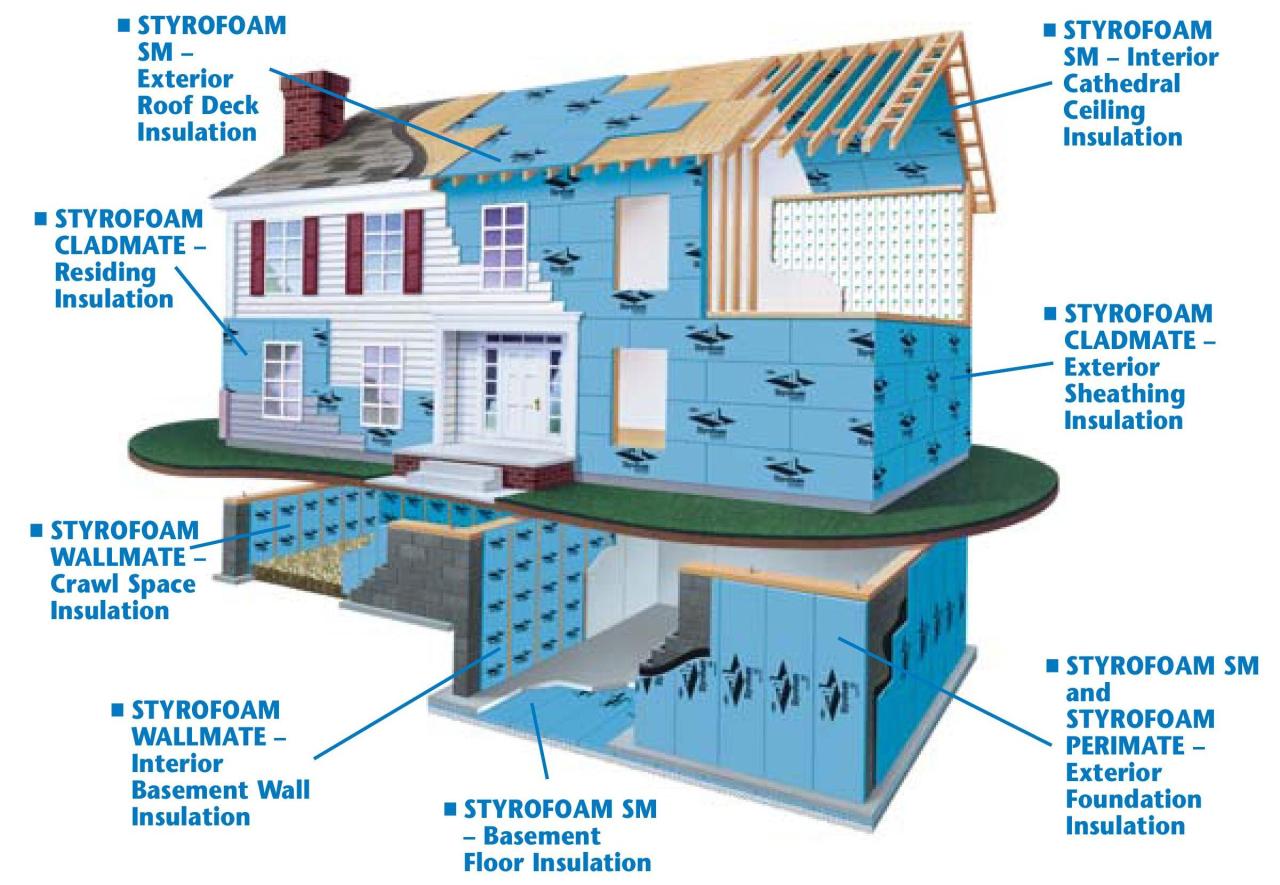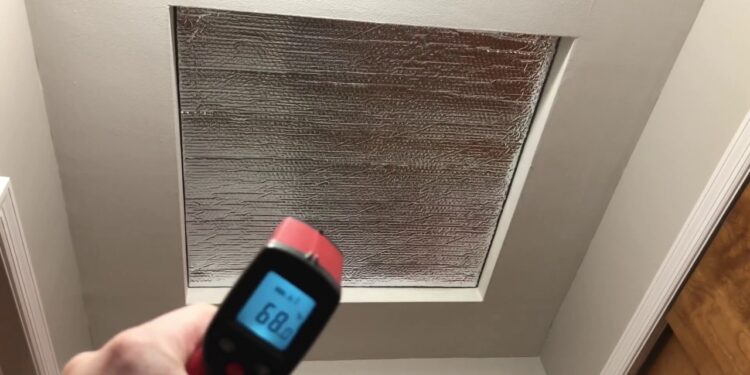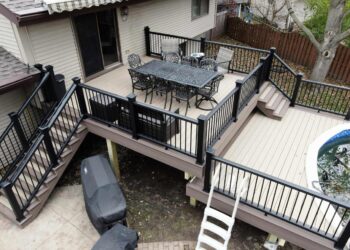Whole house insulation options set the stage for this enthralling narrative, offering readers a glimpse into a story that is rich in detail and brimming with originality from the outset. From types of insulation to installation methods, cost analysis, and environmental impact, this guide covers it all.
Types of Insulation
When it comes to insulating your entire house, there are several options to choose from. Each type of insulation has its own set of pros and cons, which can impact its effectiveness in different situations.
Fiberglass Insulation
Fiberglass insulation is one of the most common types used in homes. It is relatively affordable and easy to install. However, fiberglass insulation can be itchy and may not be as effective at blocking air leakage compared to other types.
Spray Foam Insulation
Spray foam insulation is known for its excellent air sealing capabilities. It can fill gaps and cracks to create a more airtight seal in your home. However, spray foam insulation tends to be more expensive than other options.
Cellulose Insulation
Cellulose insulation is made from recycled paper and is a more environmentally friendly option. It is effective at reducing air leakage and can be a good choice for those looking for a greener insulation option. However, cellulose insulation may settle over time, reducing its effectiveness.
Foam Board Insulation
Foam board insulation is a rigid type of insulation that is great for areas that need a high level of insulation. It can be used in walls, roofs, and floors. However, foam board insulation can be more costly and may require professional installation.
Installation Methods

Installing insulation in a whole house is a crucial step in improving energy efficiency and reducing utility costs. Proper installation techniques are essential to ensure maximum efficiency and effectiveness of the insulation. Whether you choose to do it yourself or hire a professional, it's important to understand the different methods of installation.
DIY Insulation Methods
- Start by assessing the areas in your home that need insulation, such as attics, walls, and floors.
- Choose the right type of insulation material based on the specific needs of each area.
- Ensure that you have the necessary tools and safety equipment before starting the installation process.
- Follow manufacturer instructions carefully to properly install the insulation material.
- Seal any gaps or cracks to prevent air leakage and ensure maximum efficiency.
Hiring a Professional
- Consult with insulation professionals to assess your home's insulation needs and determine the best materials and techniques.
- Professional installers have the experience and expertise to efficiently install insulation in hard-to-reach areas and ensure proper coverage.
- Professionals can also identify any existing insulation issues and provide solutions to improve overall energy efficiency.
- While hiring a professional may involve additional costs, it can save time and ensure a higher quality installation.
Importance of Proper Installation Techniques
Proper installation techniques are essential for achieving maximum energy efficiency and reducing heating and cooling costs. Inadequate installation can lead to air leaks, moisture problems, and decreased insulation effectiveness. By following the correct installation methods, you can ensure that your home is properly insulated and more comfortable year-round.
Cost Analysis

When considering whole house insulation options, it is crucial to break down the costs involved to make an informed decision. This includes comparing the initial investment required for different insulation materials and installation methods with the long-term savings they can provide in terms of energy efficiency and reduced utility bills.
Additionally, exploring any available rebates, tax credits, or financing options can help offset the overall cost of an insulation project.
Cost Considerations for Whole House Insulation
- Initial Investment: The cost of insulation materials and installation can vary depending on the type of insulation chosen, the size of the house, and the complexity of the project. Some materials may be more expensive upfront but offer greater energy savings in the long run.
- Long-Term Savings: Investing in quality insulation can lead to significant savings on heating and cooling costs over time. Properly insulated homes require less energy to maintain a comfortable temperature, resulting in lower utility bills.
- Rebates and Tax Credits: Many government agencies and utility companies offer rebates or tax credits for energy-efficient home improvements, including insulation projects. Taking advantage of these incentives can help reduce the overall cost of insulation.
- Financing Options: Some homeowners may qualify for financing options, such as low-interest loans or energy efficiency mortgages, to help cover the upfront costs of insulation. These programs can make it more affordable to upgrade the insulation in a home.
Environmental Impact

Insulation materials can have a significant impact on the environment, both during production and throughout their lifespan. Choosing eco-friendly insulation options can help reduce your carbon footprint and contribute to a more sustainable future.Insulation plays a crucial role in improving energy efficiency in buildings, reducing the need for heating and cooling systems.
This, in turn, helps lower energy consumption and greenhouse gas emissions. By properly insulating your home, you can not only save on energy bills but also decrease your overall environmental impact.
Eco-Friendly Insulation Options
- Cotton Insulation: Made from recycled denim, cotton insulation is a sustainable option that helps reduce waste in landfills. It is non-toxic and easy to install, providing effective thermal insulation.
- Cellulose Insulation: Composed of recycled paper products treated with fire-retardant chemicals, cellulose insulation is an environmentally friendly choice. It offers good thermal performance and can be blown or sprayed into walls and attics.
- Wool Insulation: Sheep's wool is a renewable and biodegradable material that is often used for insulation. It has natural fire-retardant properties and excellent thermal insulation capabilities.
Final Conclusion
In conclusion, Whole house insulation options provide homeowners with a myriad of choices to enhance energy efficiency, reduce costs, and contribute to a sustainable future. With a better understanding of the various insulation options available, individuals can make informed decisions to create a comfortable and eco-friendly living space.








